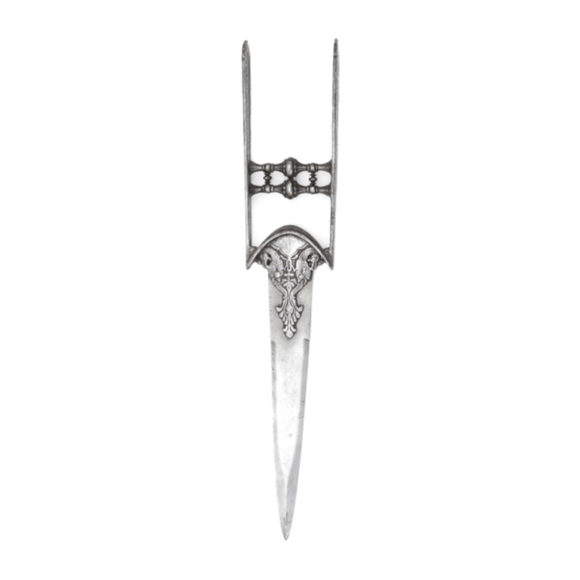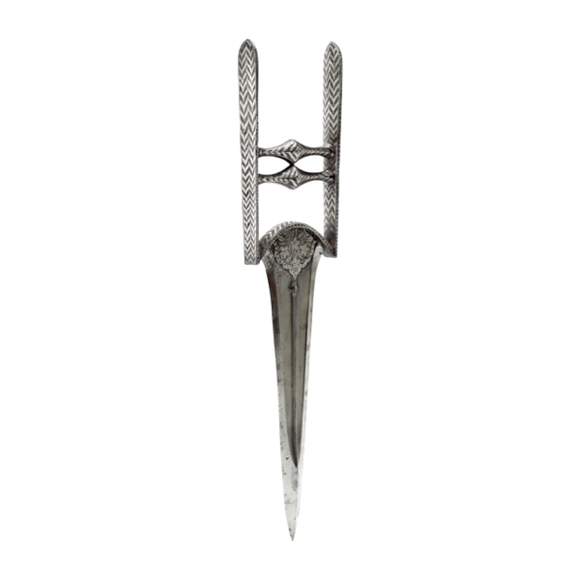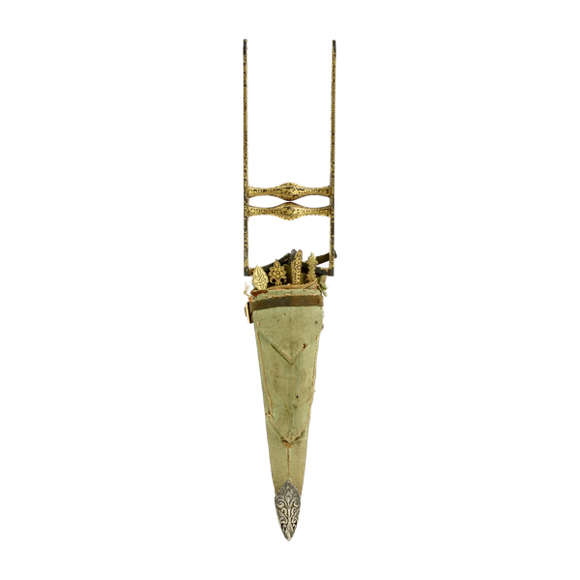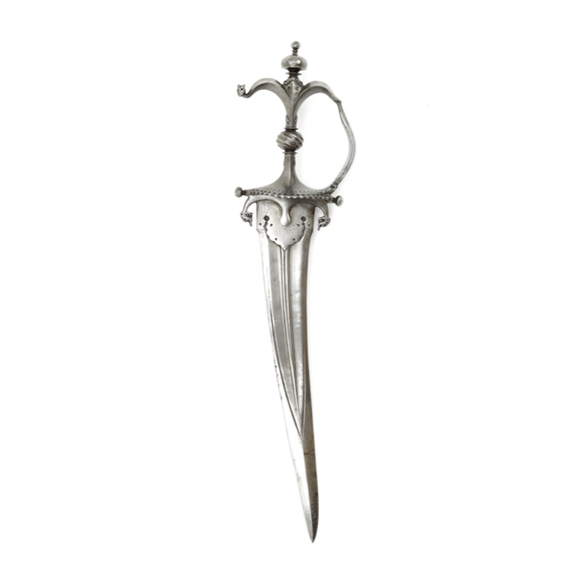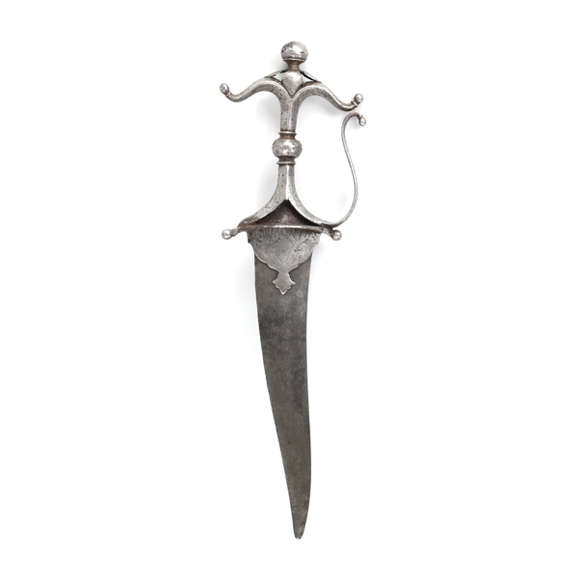Of a style often associated with Tanjore, the seat of the Vijayanagara empire.

53.2 cm / 20.9 inch
31 cm / 12.2 inch
forte 3.5 mm
middle 3 mm
near tip 2 mm
forte 30 mm
middle 27 mm
near tip 22 mm
609 grams
South India, later part of the Bikaner armory.
European blade.
Iron, steel
17th century
Description
An interesting South Indian style katar with an imported European blade. Such blades were imported in some quantity and were very popular in South India in the 17th century, and used to fit several weapons including katar but also larger swords like the pata gauntlet sword. When used on katar, the blades are often considerably shortened, like on this example. The handle is of typical south Indian form with the blade being held by two langets on an oval, hollow base.
Typical also for southern work of the time are the side-bars that terminate in a small finial, something also often seen on early Vijayanagara hooded katar. The two handlebars that sit between the side-bars are of elongated melon shape, the next step in the evolution from the ball-shaped handlebars of earlier katar. The edges of both side-bars and the oval base are ribbed, a hint towards the beaded rims often seen on arms associated with the Tanjore armory.
Association with the Bikanēr armory
While exhibiting all the hallmarks of southern work, this did make its way to the Bikanēr armory in Rajasthan where it got the typical punch-dot marks found on items from this inventory. Part of the armory was sold to several British antique dealers in the late 20th century, and pieces with these armory marks have been circulating ever since. One of the more famous pieces is a shirt of mail and plate in the Metropolitan Museum in New York, accession number 2000.497.
The shirt is inscribed with the name of Maharaja Anup Singh and the date Samvat 1774 (approx. 1691 A.D.) Anup Singh lead his armies southwards in the late 17th century, overtaking Golconda in 1687 and Adoni in 1689. The shirt is believed to have been originally from Bijapur and taken as booty in one of these campaigns.1
It seems that our katar may very well have similar provenance, and was incorporated into the Bikanēr armory as booty from one of these southern campaigns. Stylistically it is of a type we expect to have been used at that time and place.
Bikanēr armory markings
Rumor has it that three attempts have been made to catalog the items from the armory, and indeed it's common to find two or three different serial numbers on a single piece. This piece also has three markings, one on each side-bar and one on one of the langets. Two of these often start with a marking that looks a bit like CA in the Western eye, which is probably shorthand for Bi of Bikanēr. then follows a number. The third is often only a number:

Marking 1: "Bi 514"
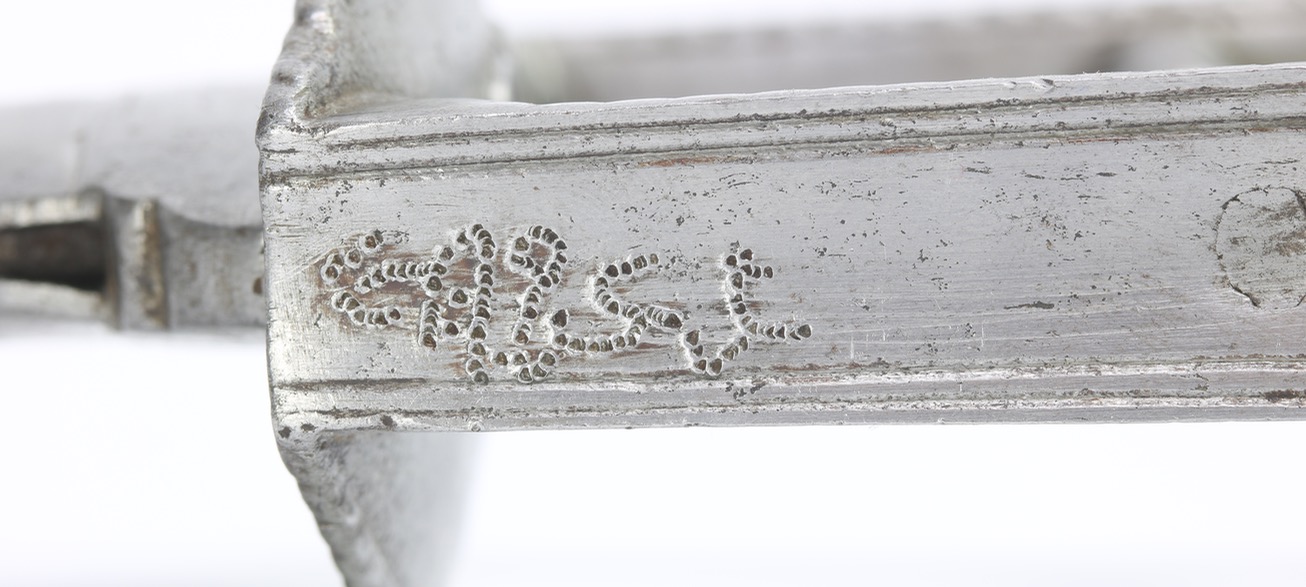
Marking 2: "Bi 169"

Marking 3: "30"
Comparable examples (Added August 16, 2018)
Various comparable examples exist, but few of them have a sound provenance. An exception is a piece in the Royal Danish Kunstkammer. Accession number EAb38, this piece entered the collection as early as 1674. The decor is much nicer but the general form is pretty much identical to ours. It is 52cm long.2

The katar in the Royal Danish Kunstkammer.
Condition
The items from the Bikanēr armory tend to be very well-preserved, commonly found in an almost over-cleaned looking state with bright, shiny blades and almost spotless handles. This all-steel katar is no exception: all surfaces have been kept polished and the blade is burnished to a bright mirror-like sheen. It may look too clean to the novice collector, but those who have seen enough Bikanēr items know that this is the state they are generally found in.
Conclusion
An interesting South Indian katar of the 17th century, of typical form and with European blade common on South Indian arms from this period. It somehow made its way to the Bikanēr armory in Northern India, possibly taken as booty in one of Anup Singh's campaigns in the late 17th century. A fascinating piece of history, in excellent condition.
Notes
1. This mail shirt is described in detail in David E. Alexander and Stuart Pyhrr; Islamic Arms and Armor in The Metropolitan Museum of Art, Yale University Press, 2015. Pages 46-47.
2. Bente Dam-Mikkelsen & Torben LundbÆk. (editors); Etnografiske genstande i Det kongelige danske Kunstkammer 1650-1800 (Ethnographic objects in the Royal Danish Kunstkammer 1650-1800) KØbenhavn : Nationalmuseet, 1980. Object number EAb38. Pages 106-107.

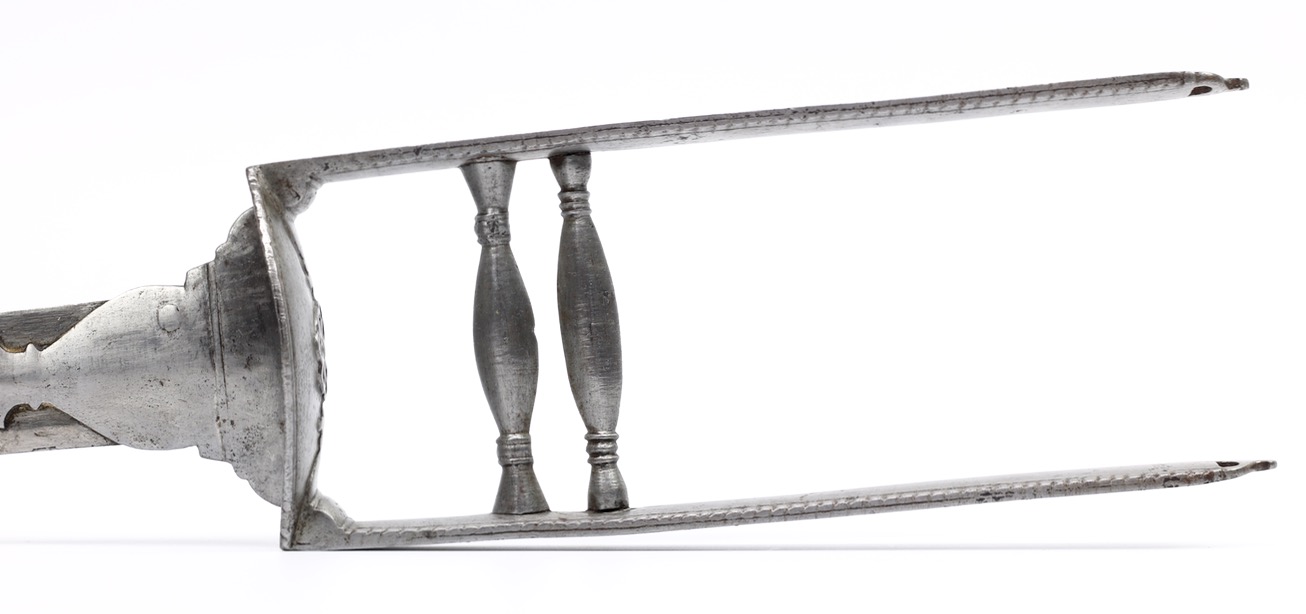
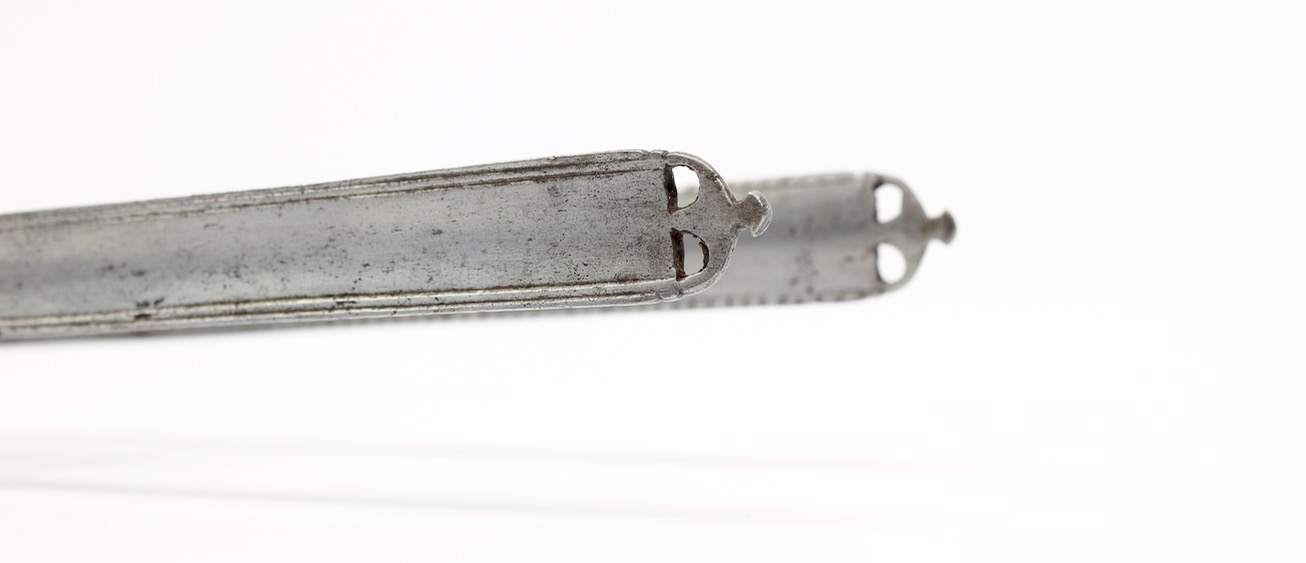


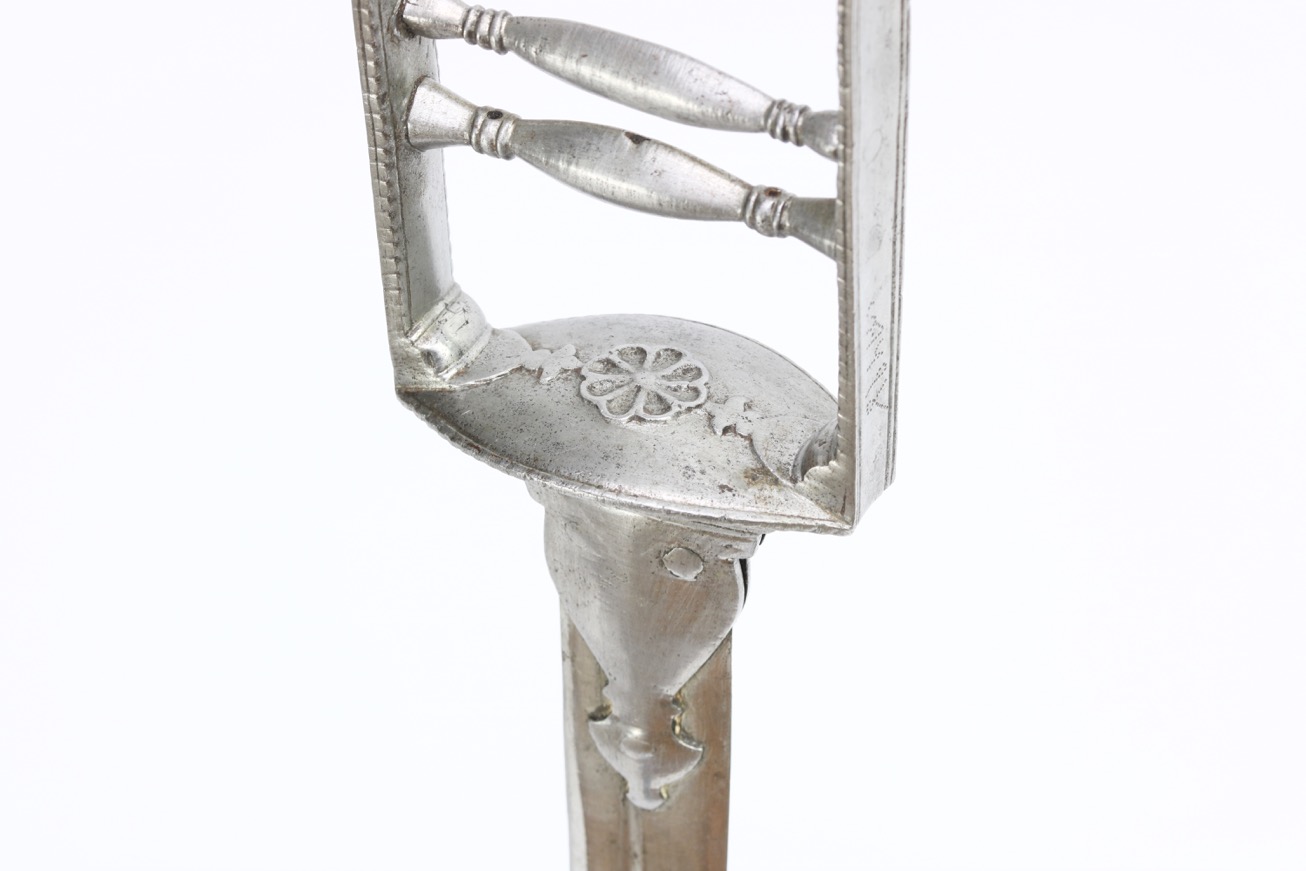

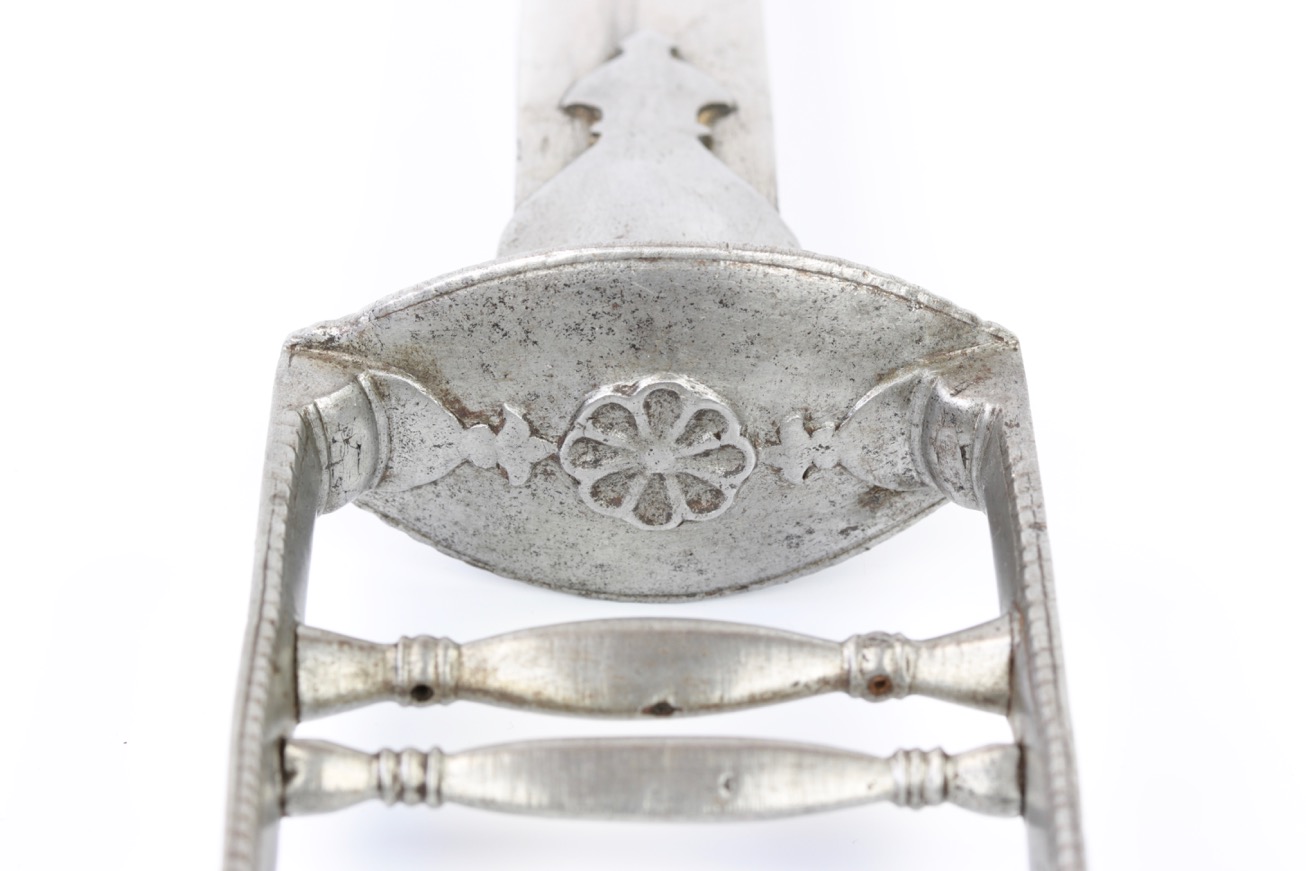
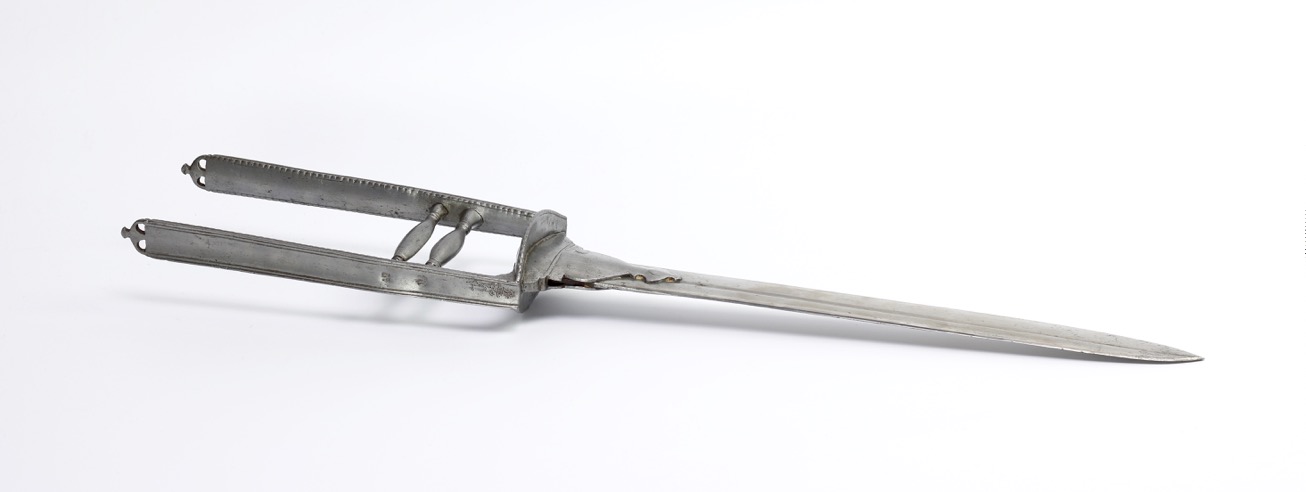



Somewhat worn but once very high-quality, with great sculptural qualities and remains of silver "true…

